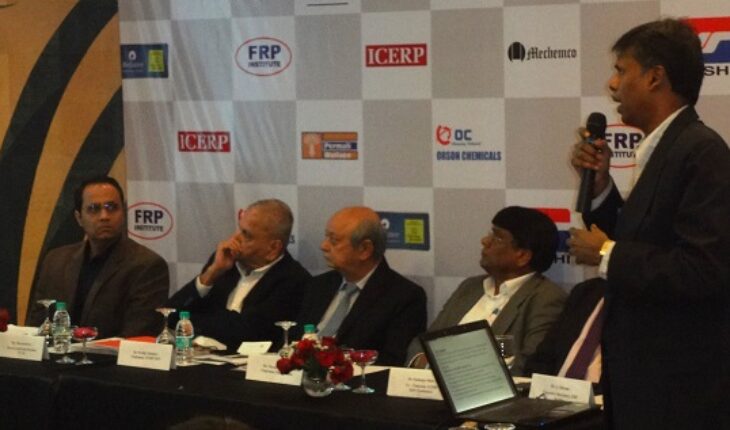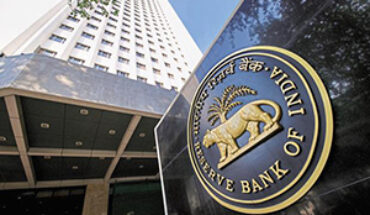The Indian Composites Industry – also known as the fibre-reinforced plastics industry – is set to mark a double-digit growth by 2021, according to the Indian Composites Industry Outlook-2018 Report launched by the FRP Institute, an apex trade body of the Indian Composites Industry.
The FRP Institute launched the white paper in Mumbai recently and noted that the ‘International Conference and Exhibition on Reinforced Plastics (ICERP) 2019 organised by it here from January 10 to 12, 2019, would bring together all stakeholders of the Indian Composites industry on one platform.
C Narayana Reddy, Chairman, FRP Institute, said this Report will act as a mouthpiece of the Composites industry and, in this conference, the industry members will discuss innovations and ways to enhance the quality of materials and products while creating awareness about composites materials.
Describing the Indian Composites industry as being on the ‘cusp’ of a revolution, Pradip Thakkar, Chairman, ICERP 2019 — while launching the report recently and announcing the ICERP — said “We see bright opportunities in the domestic and international market. This conference will help us to deliberate on the opportunities available in the Indian market, and also the challenges that need to be overcome in order to achieve a higher growth rate.”
“Our target is to make India the leading hub for composites globally. Our objective is to bring together all stakeholders in the composite value chain and create joint ventures in broadening their participation while also creating good business opportunities in the defence sector and emerging sectors like UV, drones and so on. We see composites usage necessary in manufacturing bus bodies, interiors of trains and other railway purposes, high-end applications in cars, window panels, sound-proofing, skydomes, pipes and manhole covers, printed circuit boards, marine boards, swimming pools, resorts, aircrafts including helicopters.”
Thakkar said 140 exhibitors including 40 from foreign countries had confirmed their participation in the ICERP. The Indian Composites industry had begun in 1962 with 360,000 tonnes composites production till date that was much used presently in the wind energy sector where 34060 MW energy had been generated so far, he said.
To a question, he said while growth rate of composites in India is around 8%, composites per capita usage was barely 0.25 kg in India – compared to the USA (10 kg) – and lots of sectors were lying untapped with the drawback being lack of awareness about its potential including it being hi-strength, low maintenance, lightweight and corrosion-free. “Opening up of Defence sector for private sector participation will provide an incentive to foreign OE manufacturers to enter into strategic partnerships with Indian companies and leverage the domestic markets while aiming at global markets. Composites companies around the world are looking at India as a destination with huge business potential. We want to also align ourselves with Government initiatives like Swach Bharat (toilets can be made of composites) and Clean Ganga Project,” he added.
S Ramachandran, Director, Jushi India Fibreglass Private Limited, said Jushi is a Chinese company which is setting up a plant in Maharashtra (under Make in India) — by investing US$ 246 million (Rs 1650 crores) in the first Phase of the two Phases total investment of US$ 500 million – for manufacturing glass fibre for use in the telecom sector, electronics, mass transit, civil engineering and so on.
Dr Chaitanya Shah, Conference Co-Chairman of ICERP 2019, said “Composites: Limitless Possibilities” is the theme of this conference which will highlight future possibilities of Composites usage and related global development programmes . “Carbon is costly and serves only aerospace. There are very few carbon fibre producers in the world and India is in the early stages in this regard,” he said.
Thakkar intervened to add that the Composites industry is expecting much higher growth as the DRDO, ISRO use carbon fibres and our industry players plan to build a carbon fibre plant to meet this need. The Defence Ministry is promoting the usage of such materials.”
The Indian Composites market is expected to reach an estimated US$ 2.5 billion at a CAGR of 14.1% by 2021. The future of Indian composites sector is attractive in the wake of increasing consumption opportunities for composites materials in various industries as– considering the end-use applications — industries like transportation, wind energy, electrical and electronics, pipes and tanks, aerospace, defence, construction and marine will be the major drivers for this demand, the report stated.
The Indian Government’s ambitious ‘Make in India’ initiative and projects like smart cities, sewage treatment systems, new pipelines for water and sewage and rehabilitation of existing pipelines etc too have created momentum for the growth of the composites industry.
Witnessing the highest growth since 2015, the Indian Composites market is estimated at 3.6 lakh metric tonnes in 2018. As per the Report, there were six major industries where composites were mostly consumed in 2018 and these represented 82.1% of the total volume. The Mass Transportation sector was the largest user of composites components with a share of 20.5%, followed by Building & Construction (14.2%), Electrical & Electronics (13.8%), Renewable Energy (12.3%), Infrastructure (11.4%) and Chemical and Corrosion (9.9%).
The aerospace industry – a sunrise sector – is expected to add volume to the composites industry due to the Government’s impetus on manufacturing 30 percent of components locally. These prospects will not only help around 3,000-large, mid-sized and small manufacturers expand their production base, but also encourage them to cater to the global export market.
The Report has also addressed certain challenges like need to eliminate a persistent lack of awareness of composite in the Indian industrial world, absence of solid and concrete regulatory framework, the need to promote standardization of end-use products and establishing a solid infrastructure for recycling composites waste.
Recycling such waste is one of the issues facing this industry where one use witnesses it being ‘ground’ for making cement, and also as an energy source in power-generating processes, said one of the officials while mentioning that cement company ACC has shown interest in recycling composites.





